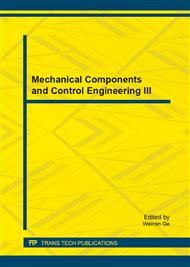p.808
p.812
p.818
p.822
p.826
p.830
p.836
p.840
p.844
Experimental Research of Thermal Effect of Desktop Computer Motherboard
Abstract:
With the rapid development of desktop computer, its motherboard power consumption has become an important factor. In this paper, experimental research under different conditions of the motherboard components is carried out. We select four kinds of load conditions of empty load, 100% load, one high-definition movie online display and two high-definition movies online display simultaneously. Through the temperature changing, its thermal effect is shown and so as to understand its heat transfer mechanism of desktop computer motherboard. From the experimental results, it is seen that, when working time more than forty minutes, the computer motherboard temperature will reach the maximum value in each operating state.
Info:
Periodical:
Pages:
826-829
Citation:
Online since:
October 2014
Authors:
Keywords:
Price:
Сopyright:
© 2014 Trans Tech Publications Ltd. All Rights Reserved
Share:
Citation:


